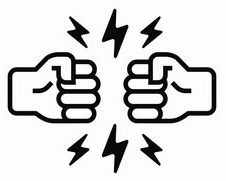What is pump ops class?
What is pump ops class?
This course covers the laws, rules and driving techniques for emergency vehicles as well as a review of hydraulics. Fireground evolutions and driving make up the practical part of the course. The evolution portion of the course includes the use of pre-connected lines, tandem pumping, drafting relays and master streams.
What is a motor pump operator?
Pump Operator means the fire apparatus driver/operator who has demonstrated the knowledge, skills, and abilities required for the operation of apparatus equipped with an attack or fire pump in accordance with the objectives specified in this Standard for that level.
What is a pump in firefighting?
A fire pump is a part of a fire sprinkler system’s water supply and powered by electric, diesel or steam. Alternately, other fire hoses reels or other firefighting connections are opened, causing a pressure drop in the fire fighting main.
What does a pump operator do?
A pump operator is someone who works with stationary or portable pumps. He or she will transfer liquids, gases, and powdered materials in and out of vessels and processes, perform inspections and maintenance on various machinery, and troubleshoot issues with systems and processes.
When should I pump in RPM mode?
Why do we need an rpm mode? The rpm mode will allow the pumper to continue to operate if a pressure sensor clogs or fails and will allow constant engine speed operation for certain types of equipment like some types of CAFS or other engine driven equipment that need a relatively fixed speed for best performance.
Why the centrifugal pump is the most common fire pump?
Centrifugal pumps are the most popular fire pumps and are classified as nonpositive-displacement pumps because they do not pump a definite amount of water with each revolution. Rather, this type of pump imparts velocity to the water and converts it to pressure within the pump itself.
What are the advancements in Fireground pump operations?
Advancements in apparatus have taken some of the work from pump operators. Now there are color-coded discharges, pressure governors, and other options. When the pressure governor systems hit the market, driver/operators had a lot of work to do to understand them.
How many hours does a fireground pump operator work?
Career driver/operators spend countless hours studying district maps, hydraulics, changes in hose and nozzles, and the apparatus itself. Their work is time sensitive and many of their decisions dictate the forward progress of the incident.
What’s the capacity of a standard fire pump?
Most standard fire pumps are designed and rated to flow a capacity of either 1,000; 1,500; or 2,000 gpm.
What’s the coefficient for a fire ground pump?
The equations are not changing, but the numbers that we are plugging in are. There are industry standards floating around in the fire service world, but some of these calculations may need to be determined by your department and are sensitive to your equipment. For example, for years we have used 15.5 as a coefficient for 1 ¾-inch hose.
